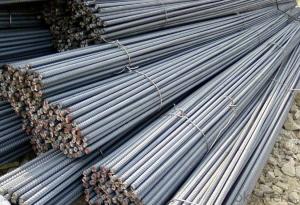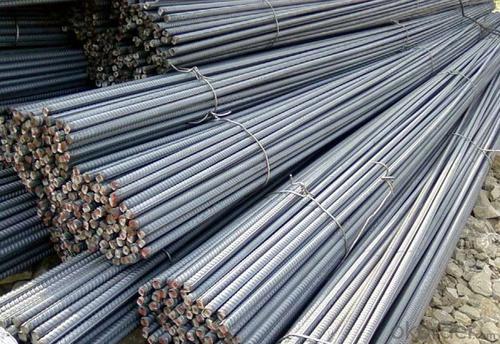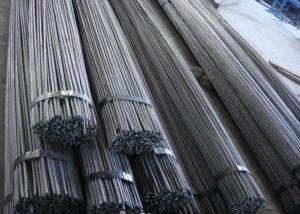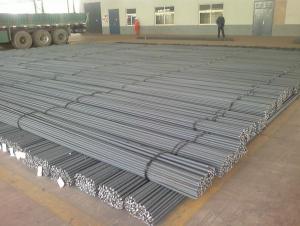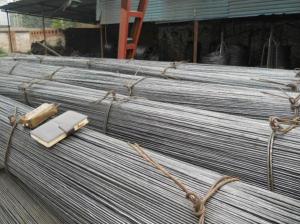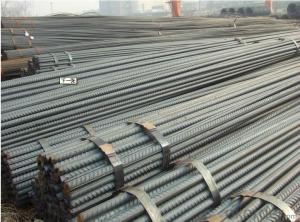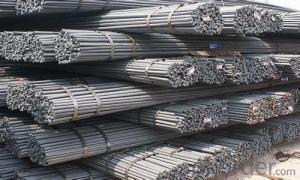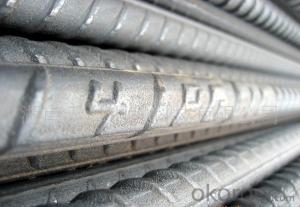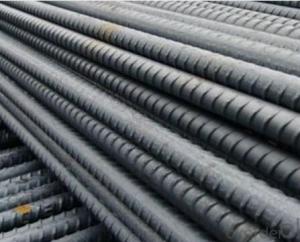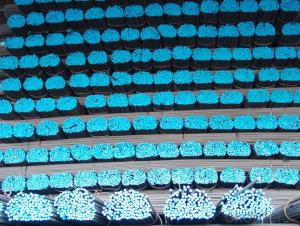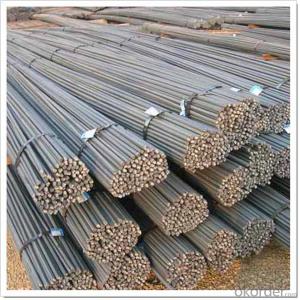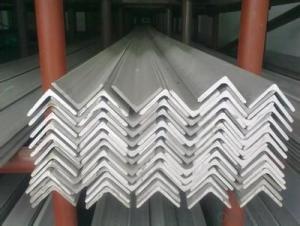Deformed Bar Hot Rolled High Quality BS449 or ASTM
- Loading Port:
- Tianjin
- Payment Terms:
- TT OR LC
- Min Order Qty:
- 25 m.t.
- Supply Capability:
- 200000 m.t./month
OKorder Service Pledge
OKorder Financial Service
You Might Also Like
Product Description:
OKorder is offering high quality Hot Rolled Steel I-Beams at great prices with worldwide shipping. Our supplier is a world-class manufacturer of steel, with our products utilized the world over. OKorder annually supplies products to European, North American and Asian markets. We provide quotations within 24 hours of receiving an inquiry and guarantee competitive prices.
Product Applications:
Deformed bar is widely used in buildings, bridges, roads and other engineering construction. Big to highways, railways, bridges, culverts, tunnels, public facilities such as flood control, dam, small to housing construction, beam, column, wall and the foundation of the plate, deformed bar is an integral structure material. With the development of world economy and the vigorous development of infrastructure construction, real estate, the demand for deformed bar will be larger and larger
Product Advantages:
OKorder's Steel I-Beams are durable, strong, and resist corrosion, exact size, regular package, chemical and mechanical properties are stable.
Main Product Features:
· Premium quality
· Prompt delivery & seaworthy packing (30 days after receiving deposit)
· Corrosion resistance
· Can be recycled and reused
· Mill test certification
· Professional Service
· Competitive pricing
Product Specifications:
Manufacture: Hot rolled
Grade: BS4449
Certificates: ISO, SGS, BV, CIQ
Diameter: 6mm,8mm,10mm,12mm,14mm,16mm,18mm,20mm,
22mm,25mm,28mm,32mm,36mm,40mm,50mm
Length: 6M, 9M,12M or as required
Packaging: Export packing, nude packing, bundled
Chemical Composition: (Please kindly find our chemistry of our material based on HRB500 as below for your information)
Grade | Technical data of the original chemical composition (%) | ||||||
C | Mn | Si | S | P | V | ||
HRB400 | ≤0.25 | ≤1.60 | ≤0.80 | ≤0.045 | ≤0.045 | 0.04-0.12 | |
Physical capability | |||||||
Yield Strength (N/cm²) | Tensile Strength (N/cm²) | Elongation (%) | |||||
≥400 | ≥570 | ≥14 | |||||
Theoretical weight and section area of each diameter as below for your information:
Diameter(mm) | Section area (mm²) | Mass(kg/m) | Weight of 12m bar(kg) |
6 | 28.27 | 0.222 | 2.664 |
8 | 50.27 | 0.395 | 4.74 |
10 | 78.54 | 0.617 | 7.404 |
12 | 113.1 | 0.888 | 10.656 |
14 | 153.9 | 1.21 | 14.52 |
16 | 201.1 | 1.58 | 18.96 |
18 | 254.5 | 2.00 | 24 |
20 | 314.2 | 2.47 | 29.64 |
22 | 380.1 | 2.98 | 35.76 |
25 | 490.9 | 3.85 | 46.2 |
28 | 615.8 | 4.83 | 57.96 |
32 | 804.2 | 6.31 | 75.72 |
36 | 1018 | 7.99 | 98.88 |
40 | 1257 | 9.87 | 118.44 |
50 | 1964 | 15.42 | 185.04 |
FAQ:
Q1: How do we guarantee the quality of our products?
A1: We have established an advanced quality management system which conducts strict quality tests at every step, from raw materials to the final product. At the same time, we provide extensive follow-up service assurances as required.
Q2: Can stainless steel rust?
A2: Stainless does not "rust" as you think of regular steel rusting with a red oxide on the surface that flakes off. If you see red rust it is probably due to some iron particles that have contaminated the surface of the stainless steel and it is these iron particles that are rusting. Look at the source of the rusting and see if you can remove it from the surface.
Q3: How do we guarantee the quality of our products?
A3: We have established an advanced quality management system which conducts strict quality tests at every step, from raw materials to the final product. At the same time, we provide extensive follow-up service assurances as required.
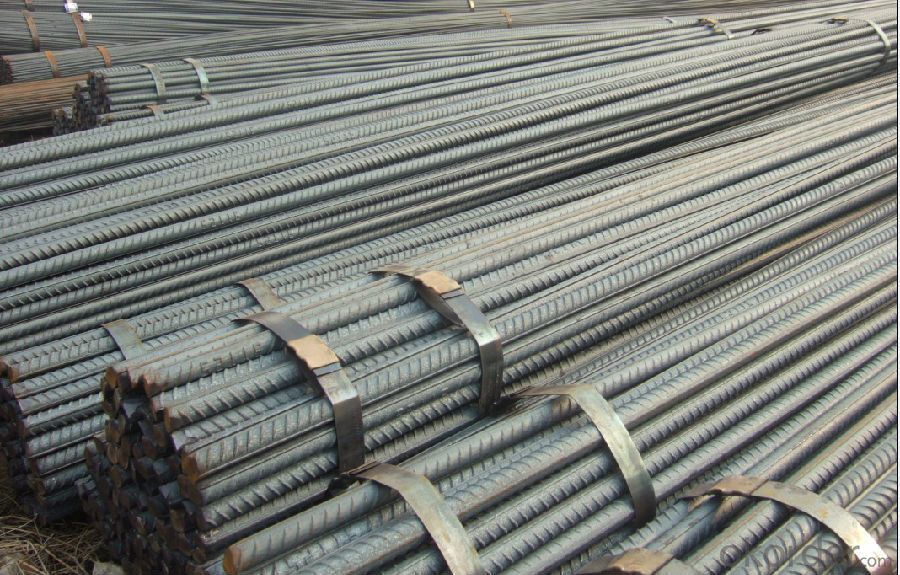
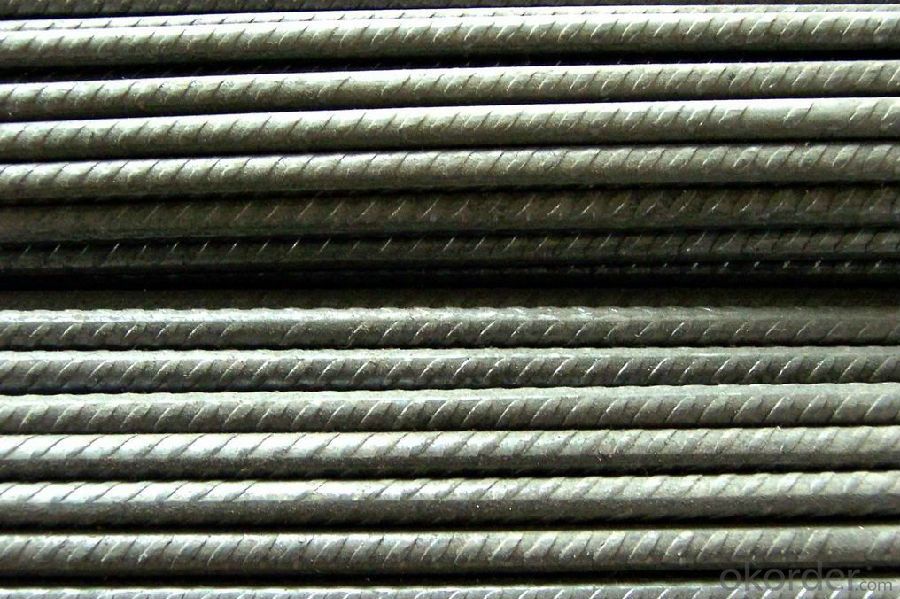
- Q: Are steel rebars susceptible to rust?
- Yes, steel rebars are susceptible to rust. Rebars are typically made of carbon steel, which contains iron. When exposed to moisture and oxygen, iron reacts to form iron oxide, commonly known as rust. This process is accelerated in the presence of salt or other corrosive substances. Rust formation weakens the rebars and can eventually lead to structural damage if left untreated. Therefore, it is crucial to protect steel rebars by applying an appropriate coating or using other corrosion prevention methods to ensure the longevity and structural integrity of reinforced concrete structures.
- Q: How can the quality of steel rebars be tested?
- The quality of steel rebars can be tested through various methods such as visual inspection, dimensional measurement, destructive testing (such as tensile strength and elongation tests), non-destructive testing (such as ultrasonic testing, magnetic particle inspection, and radiographic testing), chemical analysis, and corrosion resistance evaluation. These methods collectively ensure that the steel rebars meet the required quality standards and are free from defects or weaknesses.
- Q: How are steel rebars connected or joined together?
- Different methods are used to connect steel rebars depending on the specific application and structural requirements. Steel rebars are typically connected or joined together using the following techniques: 1. Overlapping: An effective method involves overlapping two rebars to create a continuous length of reinforcement. The overlapping length must meet the specified design requirements and is usually secured using steel tie wires or mechanical connectors. 2. Welding: Another option is to join steel rebars through welding. This process involves melting the ends of the rebars and fusing them together using heat. Welding is suitable for connecting rebars in pre-fabricated structures or when high strength and durability are necessary. 3. Mechanical couplers: Pre-fabricated devices known as mechanical couplers provide a threaded connection between two rebars. These couplers are typically screwed onto the ends of the rebars, creating a strong and reliable connection. Mechanical couplers are commonly used in construction projects where fast installation and ease of use are important. 4. Lap splicing: A widely used method in reinforced concrete structures involves connecting two rebars by overlapping them and securing the overlap with steel tie wires or mechanical connectors. This approach provides adequate strength and continuity. 5. Grouted splicing: In grouted splicing, the ends of two rebars are embedded into a sleeve or coupling filled with grout or epoxy resin. This ensures a strong bond between the rebars, enhancing load transfer and corrosion resistance. It is crucial to adhere to applicable building codes and structural design specifications when selecting the connection method for steel rebars. This ensures the overall integrity and safety of the structure.
- Q: How are steel rebars used in slab construction?
- Steel rebars are used in slab construction to provide reinforcement and strength to the concrete slab. They are placed within the concrete before it is poured, forming a grid-like structure that helps distribute the load and prevent cracking or failure. The rebars are designed to withstand tension forces and enhance the overall durability and structural integrity of the slab.
- Q: Are steel rebars suitable for use in industrial structures?
- Industrial structures can benefit from the use of steel rebars. These reinforcing bars, also known as steel rebars, are frequently used in the construction industry to enhance the strength and stability of concrete structures. Crafted from high-strength steel, they possess exceptional tensile strength, making them perfect for fortifying concrete in industrial structures that encounter hefty loads, vibrations, or other dynamic forces. Steel rebars also boast good ductility, enabling them to endure bending without fracturing. This is a crucial characteristic in industrial structures that demand high structural integrity. Moreover, steel rebars display commendable resistance to corrosion, a vital quality in industrial environments where exposure to moisture, chemicals, or other corrosive agents is common. In summary, steel rebars serve as a dependable and long-lasting option for reinforcing industrial structures, preserving their structural stability and safety over time.
- Q: Can steel rebars be used in water treatment facilities?
- Yes, steel rebars can be used in water treatment facilities. Steel rebars are commonly used in the construction of various structures, including water treatment facilities. They provide strength and durability to the concrete structures, ensuring their stability and longevity in the harsh environment of water treatment facilities.
- Q: How do steel rebars contribute to the overall sustainability of a project?
- Steel rebars contribute to the overall sustainability of a project by enhancing the durability and strength of reinforced concrete structures. This allows for longer lifespan, reduced maintenance needs, and decreased material waste over time. Additionally, steel rebars can be recycled, reducing the demand for new steel production and minimizing the environmental impact of the project.
- Q: How do steel rebars affect the constructability of projects in remote locations?
- The constructability of projects in remote locations heavily relies on steel rebars. These rebars have a significant impact on construction projects in such areas in multiple ways. To begin with, the structural integrity of concrete elements greatly depends on steel rebars. By imparting tensile strength to concrete, rebars ensure that structures can withstand different loads and external forces. This becomes particularly crucial in remote locations where construction materials might be scarce. Steel rebars facilitate the construction of sturdy and long-lasting structures, ensuring their resilience even in harsh environmental conditions. Furthermore, remote locations often lack infrastructure and have limited access to skilled labor. However, steel rebars, with their standardized sizes and shapes, simplify construction processes and make them more efficient to manage. They can be easily transported and assembled on-site, reducing the need for complex and time-consuming construction techniques. This proves particularly advantageous in remote areas where the transportation of heavy construction materials can be arduous and expensive. Additionally, steel rebars enable the construction of taller and larger structures, which is vital in remote locations where land may be scarce. By reinforcing concrete elements, rebars allow for the construction of high-rise buildings or bridges, maximizing the utilization of available space and resources. This is especially pertinent in areas with limited land availability, where vertical construction often proves to be the most viable option. Moreover, steel rebars contribute to the overall safety of construction projects in remote locations. Their ability to reinforce concrete elements ensures that structures can withstand seismic activities or other natural disasters, which may be more frequent in certain remote areas. This enhances the resilience of the built environment, safeguarding both construction workers and the inhabitants of these remote locations. In conclusion, steel rebars play a crucial role in the constructability of projects in remote locations. They provide essential reinforcement to concrete structures, enhance efficiency in construction processes, enable the construction of larger structures, and ensure the safety and durability of the built environment. Their utilization in such areas is indispensable in overcoming the challenges posed by limited resources, difficult accessibility, and harsh environmental conditions.
- Q: How do steel rebars contribute to the strength of concrete structures?
- Steel rebars contribute to the strength of concrete structures in several ways. Firstly, they enhance the tensile strength of the concrete. While concrete is strong in compression, it is weak in tension. When tensile forces act on a concrete structure, such as when it is subjected to bending or stretching, the steel rebars bear the load and prevent the concrete from cracking or failing. Secondly, steel rebars help to control and prevent the propagation of cracks in concrete. By being embedded within the concrete, rebars provide a reinforcing framework that redistributes the stress throughout the structure. This helps to limit the formation and expansion of cracks, ensuring the overall integrity and durability of the concrete structure. Furthermore, steel rebars improve the overall structural stability and load-bearing capacity of concrete structures. By distributing the load more evenly, the presence of rebars allows concrete structures to withstand greater external forces, such as the weight of a building or the impact of seismic activity. In addition to their strength-enhancing properties, steel rebars also improve the longevity of concrete structures. The steel used in rebars is highly resistant to corrosion, which is a common issue in concrete structures exposed to harsh environmental conditions or corrosive elements. This resistance to corrosion ensures that the rebars maintain their strength and structural integrity over time, extending the lifespan of the concrete structure. In summary, steel rebars contribute significantly to the strength of concrete structures by enhancing the tensile strength, controlling crack propagation, improving structural stability, and increasing longevity. Their presence ensures that the concrete can withstand various external forces and maintain its structural integrity, making them an essential component in the construction of durable and reliable concrete structures.
- Q: How do steel rebars affect the thermal conductivity of concrete structures?
- Steel rebars have a significant impact on the thermal conductivity of concrete structures. The inclusion of steel rebars in concrete increases the overall thermal conductivity of the structure. This is because steel has a much higher thermal conductivity than concrete. Consequently, heat transfer through the concrete is facilitated by the presence of steel rebars, leading to a higher overall thermal conductivity of the structure.
Send your message to us
Deformed Bar Hot Rolled High Quality BS449 or ASTM
- Loading Port:
- Tianjin
- Payment Terms:
- TT OR LC
- Min Order Qty:
- 25 m.t.
- Supply Capability:
- 200000 m.t./month
OKorder Service Pledge
OKorder Financial Service
Similar products
Hot products
Hot Searches
Related keywords
